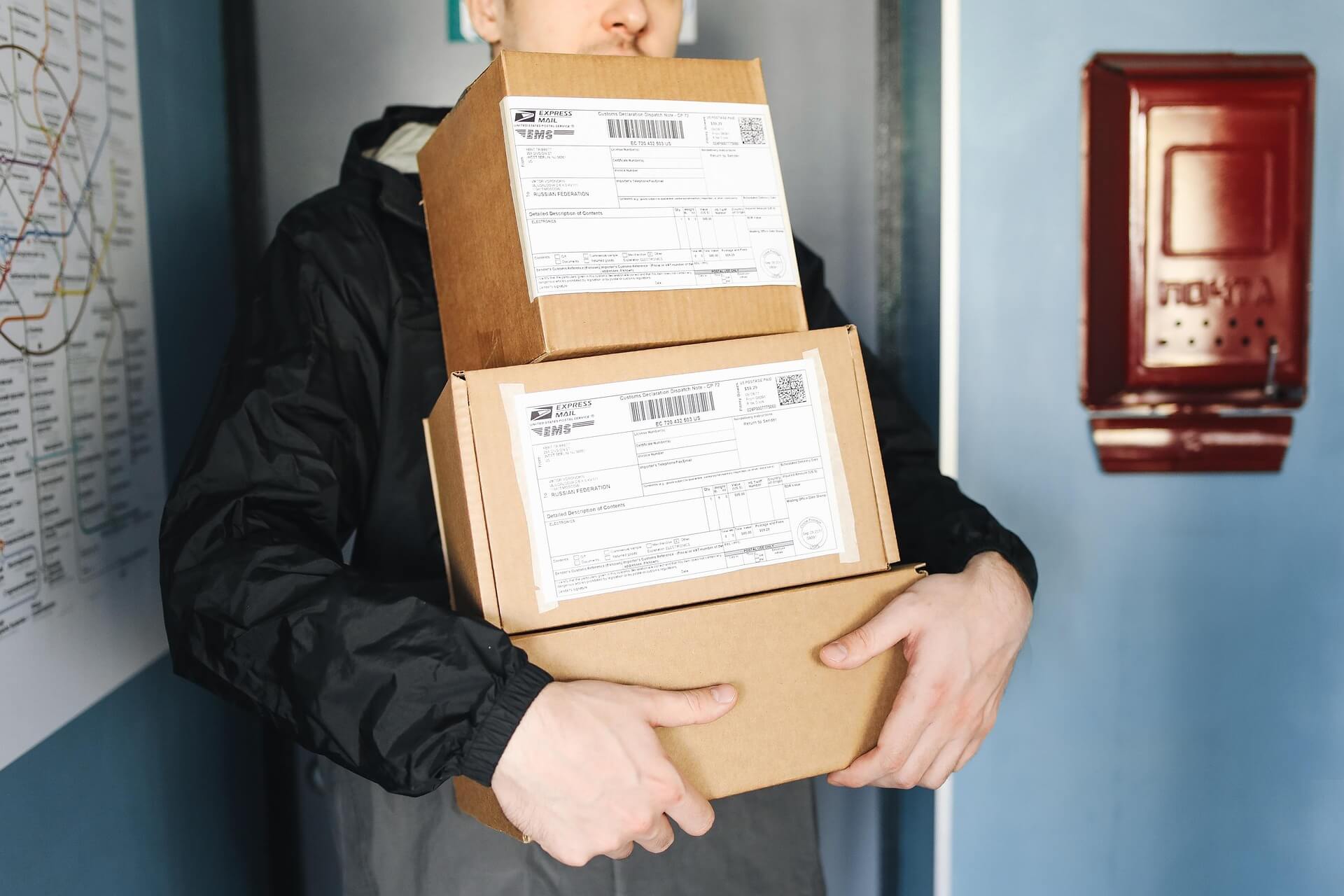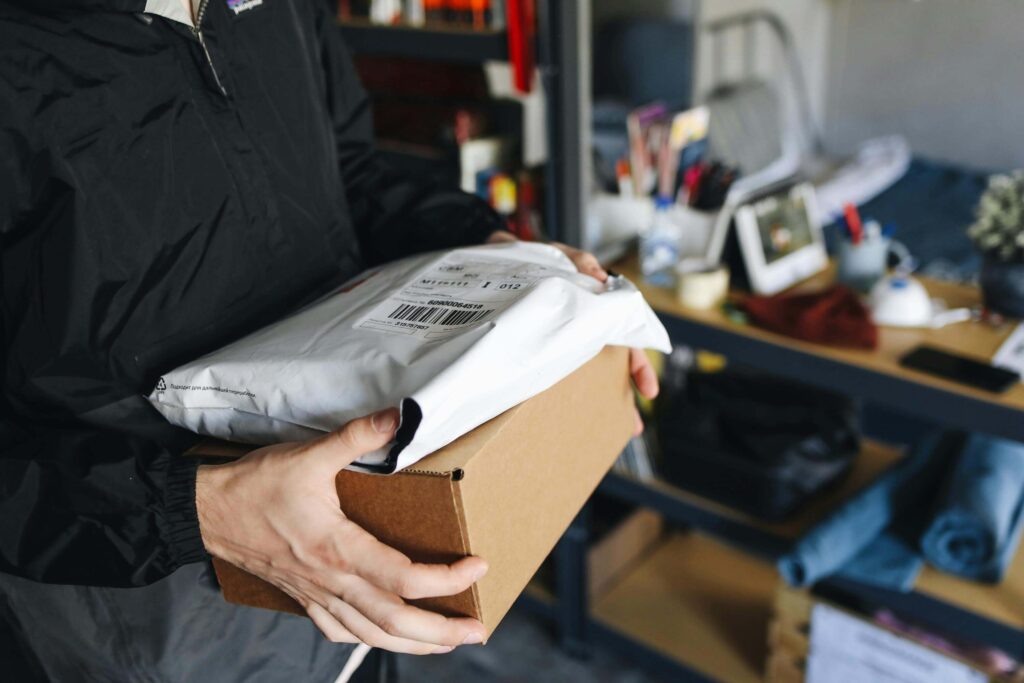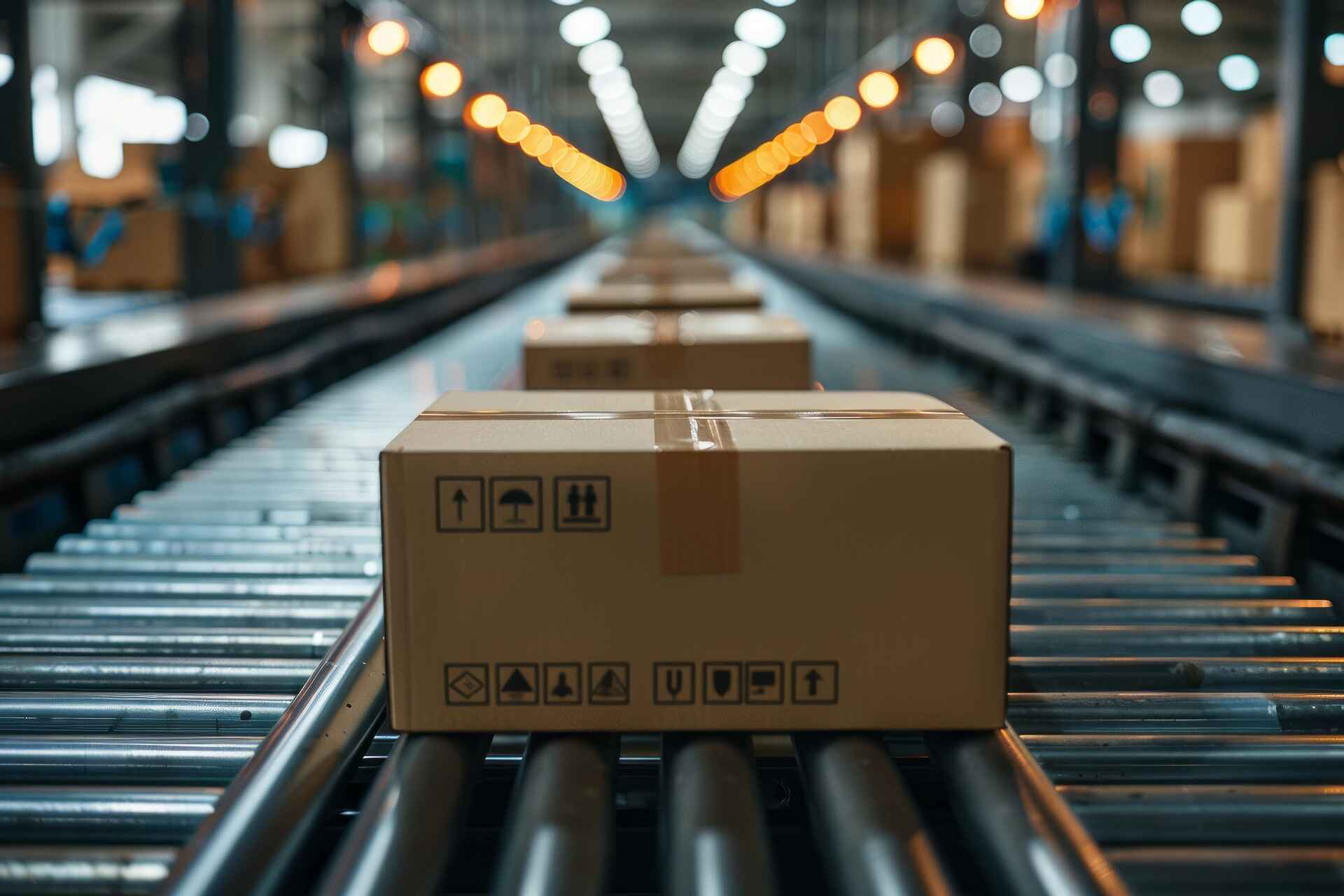Let me guess. You’re sitting there, refreshing your bank app for the third time today, wondering, “How long do Amazon refunds take?” Whether you’re an online seller or a curious buyer, understanding the Amazon refund time is crucial, not just for your peace of mind, but also for your business cash flow.
Refund timelines can vary wildly depending on how the purchase was made, who fulfilled the order, and how the item was returned. Sometimes it’s lightning-fast. Other times, it feels like you’re waiting for a check from the 1990s.
-
Amazon refund times depend on the payment method, with gift cards being the fastest and debit cards taking up to 10 business days.
-
Refunds don’t begin until the returned item is scanned, received, and inspected by Amazon or the third-party seller.
-
Amazon-fulfilled orders are refunded faster than returns handled by individual third-party sellers.
-
Using Amazon Lockers or UPS drop-off points speeds up refunds because the return is scanned immediately.
-
Sellers should process returns quickly to avoid negative reviews and maintain strong seller performance metrics.
And if you’re a seller, refund delays don’t just irritate buyers. They can affect your ratings, return handling metrics, and future sales. I’ve seen sellers lose repeat customers over something as small as a refund that took a couple of days too long.
In this blog post, I’ll teach you everything you need to know about Amazon refund processing time. Whether you’re asking why your refund hasn’t landed yet or how fast is Amazon refund for different payment types, this guide will give you the straight answers.
Refund Timelines by Payment Method
First things first—Amazon refund processing time depends heavily on how the customer paid. Not all payment methods are treated equally when it comes to speed. Some are lightning-fast, like Amazon gift cards or EBT refunds.
Others, like debit cards or cash payments, can feel like you’re waiting forever, especially if you’re juggling multiple customer inquiries or trying to close your monthly books.
That’s why it’s so important for you, as a seller, to know what to expect. Communicating realistic timelines can reduce customer anxiety, minimize refund-related complaints, and save you from unnecessary chargebacks or negative reviews.
Plus, if you’re the one waiting on the refund yourself, as many sellers are when buying supplies or personal items, you’ll know exactly when to follow up and when to be patient.
Here’s a quick table for reference:
Payment Method Refund Timeframe
Credit Card 3–5 business days
Debit Card Up to 10 business days
Amazon Gift Card Within 2–3 hours
Amazon Store Card 1–3 business days
Checking Account Up to 10 business days
SNAP EBT Within 24 hours
Pay in Cash (via partner) Within 10 business days
One of my online seller friends issued a refund to a customer who paid using a debit card. It took exactly 7 business days for the money to appear. Another time, a gift card refund hit in under an hour.
So, yes, how long do Amazon refunds take to go back on card really does depend on the method used.
And remember, these timeframes reflect the time it takes after Amazon initiates the refund. That doesn’t always happen the same day the return is shipped.
Understanding this lag between refund approval and refund appearance can help you explain delays clearly to buyers and maintain smooth customer relationships.
What Triggers the Refund Clock?
You might think the refund timer starts the moment a buyer clicks “Return Item” on Amazon. Not quite. In reality, Amazon refund processing time doesn’t begin until a few key steps happen.
First, the item needs to be physically shipped back and scanned by the carrier. Then, either Amazon or the third-party seller must receive the return. After that, the product has to be inspected and approved. Only once all of that is complete does the actual refund process begin.
Let’s say a customer drops off their return at a UPS Store on Monday. If it’s not scanned until Tuesday and Amazon doesn’t receive it until Thursday, the refund clock officially starts on Thursday—not the day the return was initiated.
That’s why so many buyers (and sellers) end up asking, “Why is my Amazon refund taking so long?” It’s usually not about the money being withheld—it’s about the process still being in motion.
And if you’re asking yourself, “How fast is Amazon refund?” the most honest answer is: as fast as the return gets back and cleared. In Amazon’s best-case scenarios, refunds can be processed within 48 hours.
But in practice, the timing depends on shipping speed, the carrier’s scanning efficiency, the seller’s return policy, and the condition of the returned item.
Pro Tip for Sellers: Encourage your buyers to use Amazon’s recommended drop-off points (like UPS Stores or Amazon Lockers) where packages are scanned immediately.
The faster the return is scanned and received, the quicker you can trigger the refund. Also, check your return queue regularly—delayed inspections can lead to negative feedback or refund disputes.
Pro Tip for Buyers: Always get a receipt or proof of drop-off, especially if you’re returning a high-value item. It can help speed things up in case you need to follow up later.
Also, remember that weekends and holidays can add a day or two to the timeline. Understanding what actually triggers the refund clock helps avoid unnecessary stress—and prevents you from thinking Amazon is holding out on your money.
Amazon-Fulfilled vs. Third-Party Seller Refunds
When it comes to refund speed, the type of seller involved plays a major role. Amazon-fulfilled orders—those handled by Amazon’s warehouses and logistics system—are usually processed much faster.
Once the returned item is scanned at a drop-off location or arrives at a fulfillment center, Amazon typically inspects and initiates the refund within a couple of business days. The process is fully automated and monitored, so there’s very little delay.

If you’re a buyer, this is often the fastest route to getting your money back. And as a seller enrolled in Fulfillment by Amazon (FBA), this means less hassle on your end, too.
Now, if you’re a third-party seller, which most small and mid-sized sellers are, the refund process can take a bit longer. You’re responsible for receiving the returned item, confirming its condition, and manually initiating the refund.
That’s when delays can creep in. Maybe the package takes a few extra days to arrive, or maybe you need time to inspect it for damage, missing parts, or signs of use.
Some sellers even wait until the return window closes, especially for high-risk or seasonal items, to avoid repeat returns. These are all valid business practices, but they can extend the Amazon refund processing time.
I remember getting a message from a buyer asking, “Why is my Amazon refund taking so long?” After some digging, I realized they had returned the item after the 30-day return window had closed.
I had to decide whether to accept the return, inspect the item, and manually issue a partial refund based on its condition. The delay wasn’t due to negligence—it was the nature of seller-managed returns.
Pro tip: If you’re a seller, set up automated return confirmations through Amazon Seller Central to speed things up. You can also include clear return instructions in your packaging to reduce confusion and prevent return-related issues.
If you’re a buyer, always return the item as soon as possible and track it, because how long Amazon refunds take often comes down to how quickly that return gets into the system.
For both buyers and sellers, knowing the difference between Amazon-fulfilled and third-party refunds is key to setting realistic expectations and avoiding frustration. So next time someone asks you, “How long does Amazon take to refund after return?” you’ll know the answer depends on who’s handling it.
How to Track Amazon Refund Status
If you’re sitting there wondering why is my Amazon refund taking so long, the first thing you need to do is track its status. Fortunately, Amazon makes it relatively easy to monitor your refund—whether you’re a buyer or a seller managing a return on a customer’s behalf.
Just head over to “Your Orders” in your Amazon account, find the order in question, and click on it to open the details. There, you’ll see a section labeled “Refund Details,” which will show you exactly where the refund is in the process.
Amazon uses several status labels to indicate where your money is. If it says “Refund Initiated,” that means Amazon has started the process, but it hasn’t hit the bank yet. “Processing” means the payment provider is still working on it, which could take a few business days, depending on how the item was paid for.
Once it switches to “Refund Completed,” that’s your cue—the money is officially on its way. But keep in mind, even after this step, the actual Amazon refund time can vary based on the payment method.
For example, while gift card refunds can appear within a few hours, debit and checking account refunds may take up to 10 business days to reflect.
Pro Tip: If you’re dealing with a customer asking how long does Amazon take to refund after return, send them a screenshot of the refund status or guide them through the steps to check it themselves.
Clear communication like this builds trust, reduces unnecessary follow-ups, and shows professionalism. Also, encourage buyers to check their email inbox for Amazon’s automated refund confirmation—it often includes the expected refund timeline based on their payment method.
Another pro tip for sellers: If you’re tracking a refund for a buyer and it still hasn’t shown up after 10 business days, reach out to Amazon support before the buyer does. It’s better to get ahead of the issue than to be caught off-guard by a customer complaint or A-to-Z Guarantee claim.
What to Do If a Refund Is Delayed
Let’s say it’s been 10 business days and your refund still hasn’t shown up. You’re checking your bank balance and wondering, “How long does Amazon take to refund after return?” Don’t worry—there are a few things you can do.
First, check the return status in your Amazon account. Go to Your Orders, click on the item, and see if it’s been received yet. If Amazon or the seller hasn’t scanned it in, the Amazon refund processing time hasn’t started. That’s a common reason for delays.
If the return shows as received but there’s still no refund, try contacting Amazon through Live Chat. It’s usually faster than calling. If it’s a third-party seller, message them directly and ask for an update. Sometimes they haven’t processed the refund yet or are waiting to inspect the item.
If it’s been longer than expected and you’re not getting answers, you can file an A-to-Z Guarantee Claim. This is Amazon’s way of protecting buyers when things go wrong.
Just make sure to wait the full refund window—one of my customers filed a claim after only 4 days, not knowing that debit card refunds can take up to 10 business days to show up. So yes, knowing what to expect really helps.
Pro Tip for Sellers: If a buyer says their refund is late, explain the refund timeline for their payment method. It shows you know your stuff and keeps your ratings strong.
Pro Tip for Buyers: If you want faster refunds, return items through Amazon Lockers or UPS drop-off. These scan the package right away, which gets your refund started sooner.
So if you’re asking, “Why is my Amazon refund taking so long?”—the answer usually depends on the return status and the payment method. Just follow the steps above, stay calm, and you’ll be on track to get your money back soon.
Tips to Speed Up Refunds (for Sellers and Buyers)
If you’re asking how fast is Amazon refund or how long do Amazon refunds take to go back on card, there are a few simple things you can do to make the process faster—whether you’re a seller or a buyer.
First, try using Amazon Lockers or UPS drop-off points when returning items. These locations scan the return right away, which means Amazon can start the refund process faster—sometimes even before the item is delivered. This can save a few days, especially if the refund is going to an Amazon gift card or store card.
Pro tip: Sellers should suggest scanned drop-off options in their return instructions to avoid delays and keep customers happy.
Next, always provide tracking info for the return. It helps avoid confusion and gives everyone a clear view of where the item is. Missing tracking is one reason people ask, “Why is my Amazon refund taking so long?”

Sellers should also check returned items and issue the refund quickly. I’ve had cases where a buyer used an Amazon Locker, and I refunded the same day it arrived. The whole refund process was done in under 48 hours. Fast action builds trust and keeps buyers coming back.
Finally, use prepaid return labels whenever you can. They make the return process easier and more trackable, which helps if Amazon or the buyer asks about the refund status later.
In short, the quicker you return or process the item, the faster the refund shows up, whether you’re dealing with a gift card, debit card, or bank account. It’s a simple way to avoid delays and keep everyone happy.
A Word for Fellow Sellers
If you’re managing multiple returns, I get it—it gets chaotic. But remember, delayed refunds can affect your seller rating.
Amazon monitors refund performance closely. Slow processing may hurt your metrics and visibility. Tools like Amazon Seller Central or third-party inventory apps can make the refund process easier to handle.
Jeff Bezos once said, “We see our customers as invited guests to a party, and we are the hosts.” If you keep that mindset, refunds stop feeling like losses and start feeling like customer service wins.







